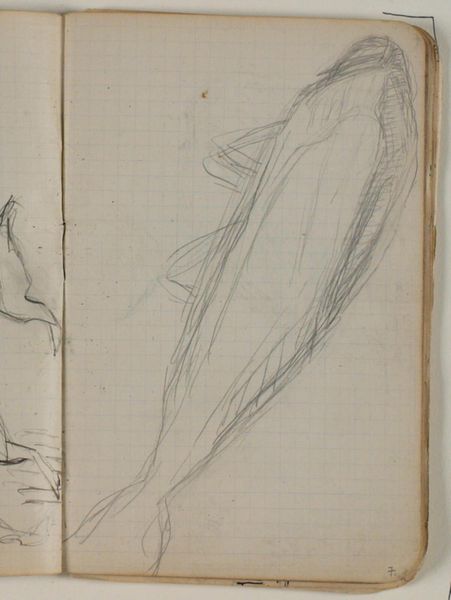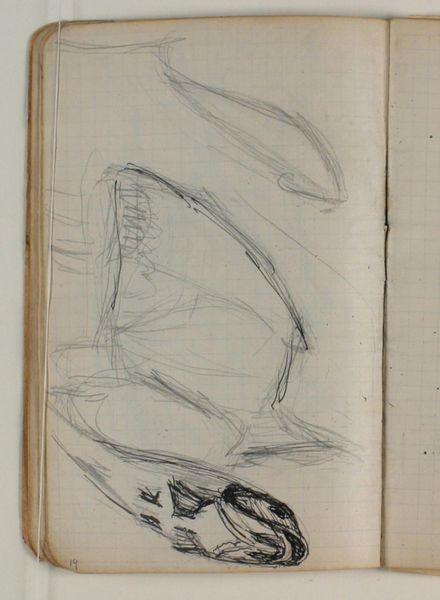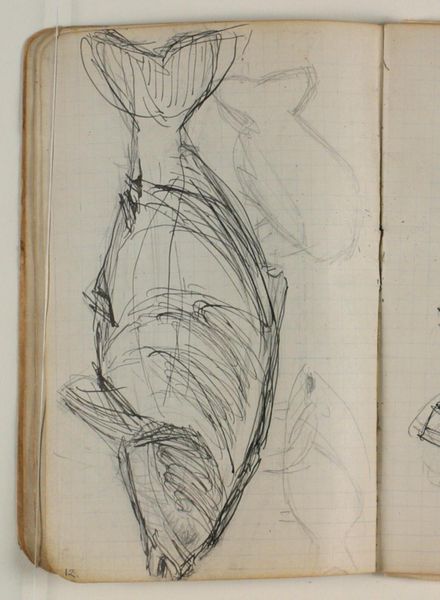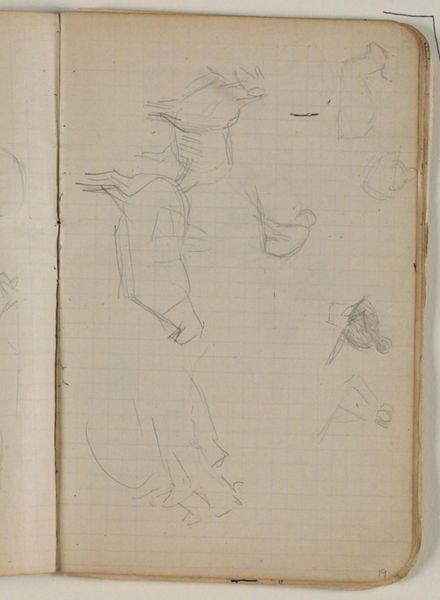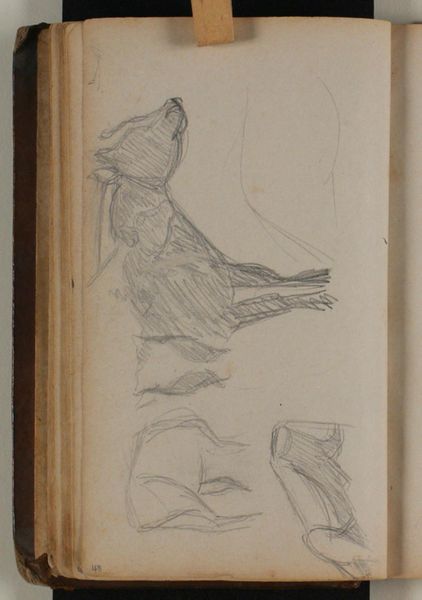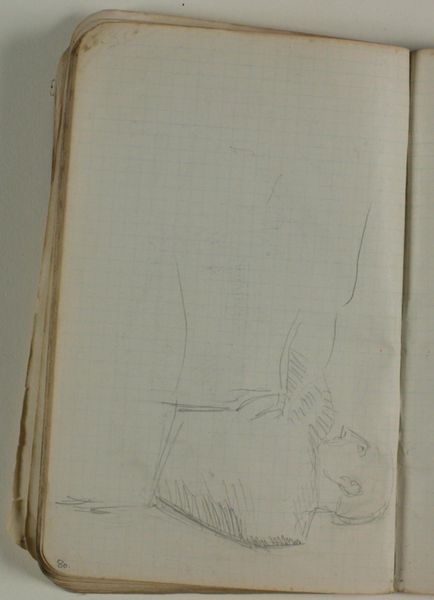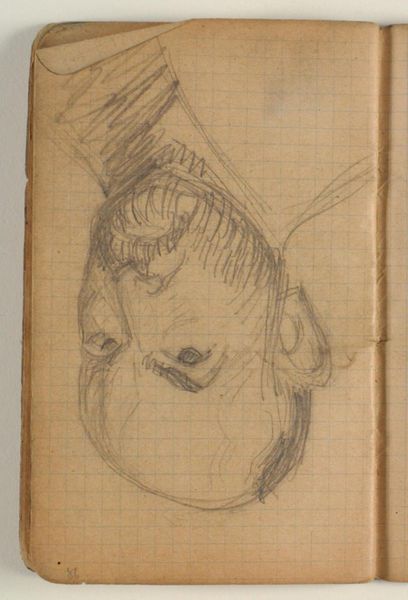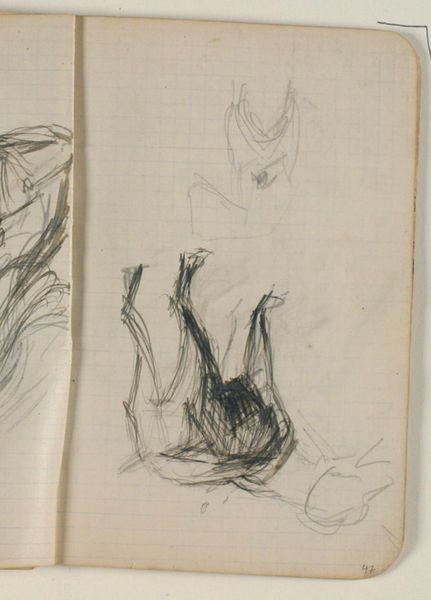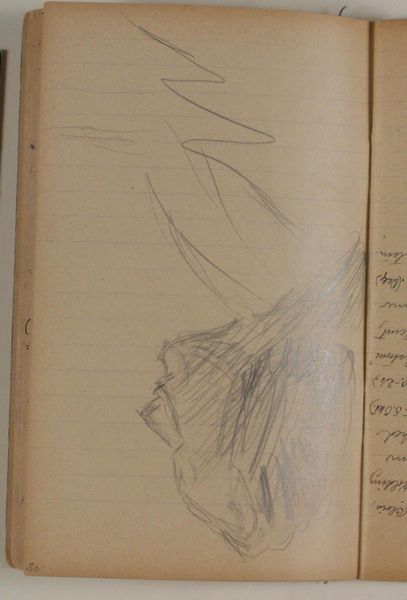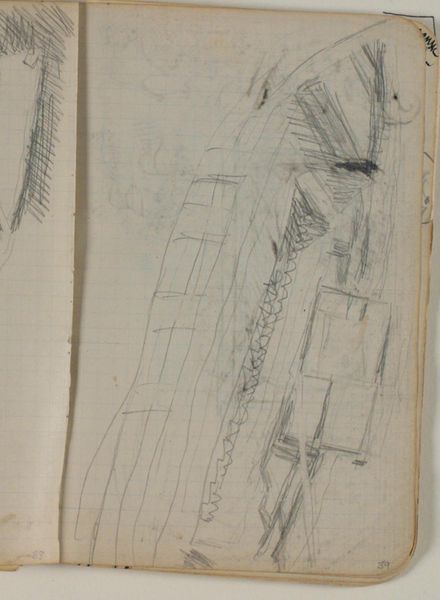
drawing, paper, pencil
#
drawing
#
animal
#
figuration
#
paper
#
pencil
Dimensions: 169 mm (height) x 109 mm (width) x 5 mm (depth) (monteringsmaal), 169 mm (height) x 109 mm (width) (bladmaal)
Curator: This sketch, "Skitser af hunde," or "Sketches of Dogs," comes to us from Niels Larsen Stevns, created sometime between 1905 and 1907. It’s pencil on paper and held at the SMK, the National Gallery of Denmark. What's your initial take? Editor: Well, my first impression is of raw energy; there's such dynamism captured with so few lines. The visible, hasty strokes impart movement, it’s barely contained by the paper's edge. Curator: Exactly. Looking at the context, dogs in art often represent loyalty, companionship, and even social status. During the early 20th century, rapid social changes saw artists explore these themes, and sketches like this could be read in relation to those shifting class dynamics and representations. Editor: I am drawn to the composition and economy of means employed. Stevns has rendered several dogs here in just a few strokes. He captures a sense of their texture—especially around their muzzles and coats—through simple hatching. Curator: And we should also address that these are *sketches*, not finished works. Stevns would have encountered similar material during a period of growing anxiety about national identity and shifting power relations within Europe. So there is room to ask what purpose studies of these familiar domesticated animals would have played. Were they a metaphor? Were they merely a formal concern? Editor: I agree the intentionality matters, but the sketch quality also focuses the gaze on form over symbol. Note how the pressure of the pencil changes, creating areas of depth and shadow despite the absence of color, directing the viewer’s attention to shape and form, almost as a problem to solve. Curator: The rough pencil marks also give them such vulnerability, like strays or creatures from the fringes of society. These are the realities that shaped this work, both visually and thematically. Editor: I'm struck by how these cursory marks generate such character, capturing something innately dog-like even in their fleeting portrayal. Curator: It really is striking. The way historical and social lenses and our own interpretations intertwine when looking at something so apparently simple. Editor: A testament to how formal analysis and engagement with context truly amplify the impact of a piece like this. Thank you for the conversation.
Comments
No comments
Be the first to comment and join the conversation on the ultimate creative platform.
